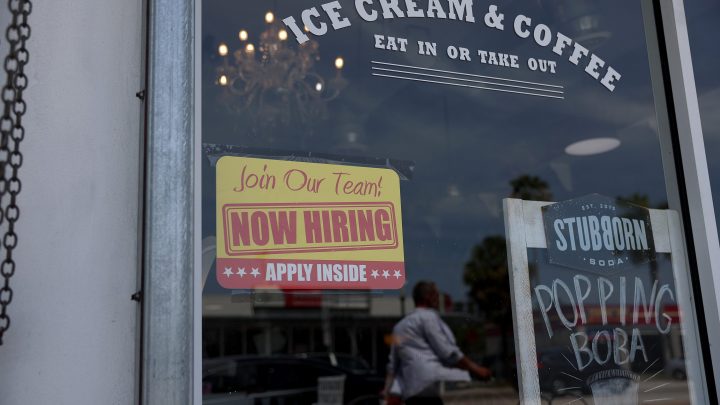
Wage growth may be slowing after period of strong gains

We’ll be getting a slew of data on the U.S. job market this week. Tuesday, the numbers on openings and the quits rate will be released, showing how many folks are voluntarily leaving their jobs for new, better-paying ones. Then, we’ll get private payrolls on Wednesday, layoff announcements on Thursday and employment and unemployment data in Friday’s jobs report for August.
A key metric in the jobs report that the Federal Reserve and other inflation watchers will scrutinize is wage growth. Some economists think strong wage growth has been a driver of price inflation lately, especially in services, where high labor costs can be passed on to consumers.
Average hourly earnings were rising at nearly 6% a year in spring 2022. They then fell as the Fed started raising interest rates, settling in at about 4.5% a year by this spring. Wage gains have been stubbornly steady since then.
But now there are signs from private-sector employers and online job sites that wage growth may be slowing further.
The wages employers post for new openings can tell us a lot about how much demand there is for workers and how motivated employers are to attract them. So, Nick Bunker at job site Indeed — which is a Marketplace underwriter — closely follows the trend in posted wages.
“It potentially is a leading indicator because when employers are trying to add someone to staff right now, that’s more indicative of the current tightness of the labor market than what is happening to wages of workers already in a job,” he said.
Posted wage growth has slowed — from 5.8% a year in April to 4.7% in July. If the trend continues, it’ll be back to pre-pandemic levels by December.
That’s not great for workers, but it’ll be welcome news for the Fed, which wants to see the labor market cool down. ZipRecruiter’s Julia Pollak noted that’s what her firm’s data is showing.
“When employers are posting jobs, they are clearly trying to reset expectations,” she said. “We have seen more categories, industries and more job titles show declines in average posted wages than increases.”
The slowdown is evident among small businesses, according to Luke Pardue at human resources and payroll firm Gusto.
“As economic uncertainty has risen, as we are seeing the highest interest rates in 20 years, small businesses aren’t adding jobs at the pace that they were last year,” he said. “We’ve seen this cooldown in the job market translate to slower wage growth.”
It’s down to 2% from 5% a year ago among the businesses Gusto tracks. Companies are also paying less to new hires.
“And what that’s telling me is that workers are losing a little bit of leverage in this labor market,” Pardue added. “So businesses are having an easier time expanding when they want to, and workers aren’t necessarily seeing that pay bump when they want to change jobs.”
Businesses are still trying hard to retain the workers they’ve already hired, though — offering richer benefits even as they give skimpier raises.
There’s a lot happening in the world. Through it all, Marketplace is here for you.
You rely on Marketplace to break down the world’s events and tell you how it affects you in a fact-based, approachable way. We rely on your financial support to keep making that possible.
Your donation today powers the independent journalism that you rely on. For just $5/month, you can help sustain Marketplace so we can keep reporting on the things that matter to you.











